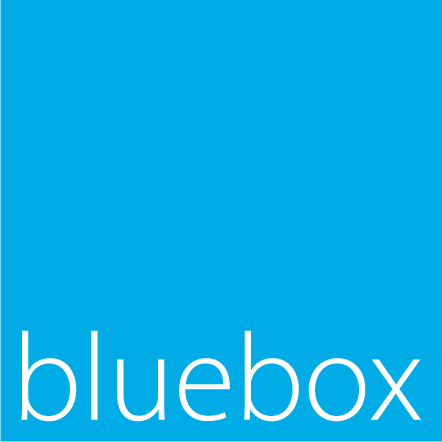The Press Box
The rise of personalised IFE and what it means for airlines
In an era where consumers expect hyper-personalised digital experiences from the moment they book a trip to the time they return home, airlines are increasingly challenged to extend that same standard of engagement into the cabin. Enter personalised inflight entertainment—a rising force in aviation tech that has the potential to transform not just the passenger experience but also the airline’s bottom line.
From mass broadcast to personal relevance
Traditional IFE systems have long taken a one-size-fits-all approach: same movies, same layout, same options for every passenger onboard. But in a world of Netflix-style curation and Spotify algorithms, that model feels increasingly outdated.
“Passengers don’t want to scroll endlessly—they want to be welcomed,” says James Macrae, CTO of Bluebox Aviation. “Personalised IFE means presenting the right content, in the right language, at the right time, and increasingly, even offering the right opportunity to buy or interact.”
This evolution is especially relevant as more airlines adopt BYOD (Bring Your Own Device) models, allowing passengers to access content on their personal phones or tablets. This unlocks a more flexible, adaptable experience—and enables deep personalisation at speed without the limitations and time delay often seen with built-in avionics hardware.
Why personalisation matters
The business case for personalisation is strong:
- Passenger satisfaction: Personalised interfaces help reduce friction, enhance perceived value, and drive up Net Promoter Scores (NPS). In one Bluebox deployment across 50 regional aircraft for a major US carrier, introducing curated content to previously unserved passengers led to an 18-point increase in NPS—highlighting the powerful impact of even modest IFE upgrades.
- Operational efficiency: multilingual menus and simplified navigation reduce crew assistance requests, saving time and improving service flow.
- Revenue uplift: according to an LSE report, airlines could generate up to $30 billion annually in ancillary revenue from in-flight connectivity and retail services, much of which depends on personalisation and digital engagement.
- Brand differentiation: in a competitive market, delivering a uniquely tailored onboard experience can be a game-changer—particularly for low-cost and regional carriers seeking to elevate their brand without major infrastructure investment.
How airlines can enable personalised IFE
Modern IFE personalisation is driven less by seatback screens and more by intelligent software and system integration. Platforms like Bluebox’s Blueview are designed to enable these capabilities, whether the aircraft is connected, disconnected, or somewhere in between.
Some key enablers include:
- User profiles & preferences: allowing passengers to save favourites, language preferences, or content interests for repeat engagement across flights.
- Airline CRM integration: tying the IFE system into frequent flyer data or booking records to surface relevant offers or services.
- Regional and route-based tailoring: content curated by departure or destination markets, seasonal travel trends, or airline partnerships.
- Flexible UI design: Blueview allows custom skinning and layout adjustment, creating branded experiences unique to each airline.
- Connectivity-optional functionality: with support for both Airbus’s Open Software Platform (OSP) and standalone Bluebox hardware, airlines can offer personalised services whether flying with full satellite internet or on unconnected short-haul routes.
What it looks like in the air
Bluebox’s Blueview platform has already been deployed across fleets including Air India, Jetstar, Hawaiian Airlines, ANA and QantasLink. In each case, the experience is adapted to suit the needs of the carrier and their passengers.
[thin strip of logos mentioned above]
For example, a low-cost carrier might use Blueview to deliver:
- A curated, demographically tailored entertainment selection in multiple languages
- Route-specific advertising or retail bundles
- Preloaded destination content like hotel bookings or city guides
- A digital F&B menu with upsell prompts based on time of day or seat class
All of this is accessed via a clean, responsive UI on the passenger’s own device—no app downloads, no setup, no hassle.
Navigating the challenges
While the benefits are clear, implementing personalised IFE isn’t without complexity. Airlines must keep in mind:
- Data privacy compliance: Especially under regulations like GDPR, which govern passenger data use and storage.
- Legacy system integration: Many carriers operate mixed fleets with varied digital capabilities, requiring a modular and scalable approach.
- Connectivity costs: Full real-time personalisation requires bandwidth, which can be costly—though Bluebox offers “offline personalisation” through preloaded content and dynamic templates.
“True personalisation often benefits from connectivity—especially when tapping into real-time CRM data,” adds James Macrae. “But it’s not all or nothing. There’s a spectrum of personalisation, and even without full connectivity, we can still deliver meaningful, tailored experiences through smart planning, flexible infrastructure, and a clear understanding of what passengers actually value.”
The future of IFE is personal
As aircraft cabins become more digital, the expectation for intuitive, tailored, and interactive content will only grow. Airlines that embrace personalisation today are investing in stronger brand equity, higher onboard spend, and longer-lasting loyalty.
Bluebox’s role in this evolution is clear: by delivering agile, scalable, and airline-branded solutions, the company is helping reshape what inflight entertainment means in the digital age.
Ready to personalise your cabin experience?
Learn more about Blueview and how Bluebox can help bring your inflight experience into the personal era: www.blueboxaviation.com/blueview
Stay tuned for more insights from the Bluebox Aviation newsroom and LinkedIn.
Any trademark used or referred to in this press release remains at all times the property of its respective owner(s)
